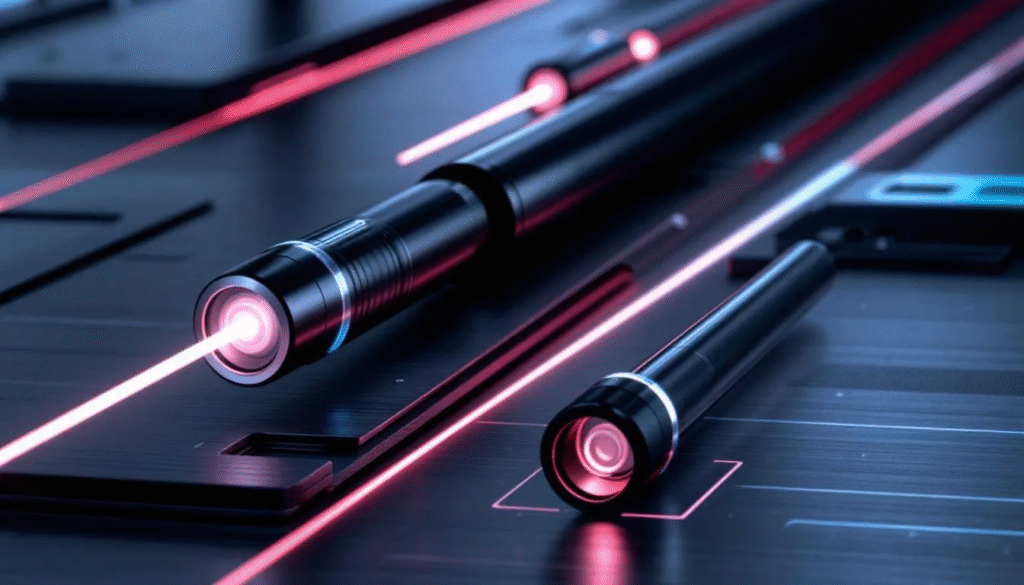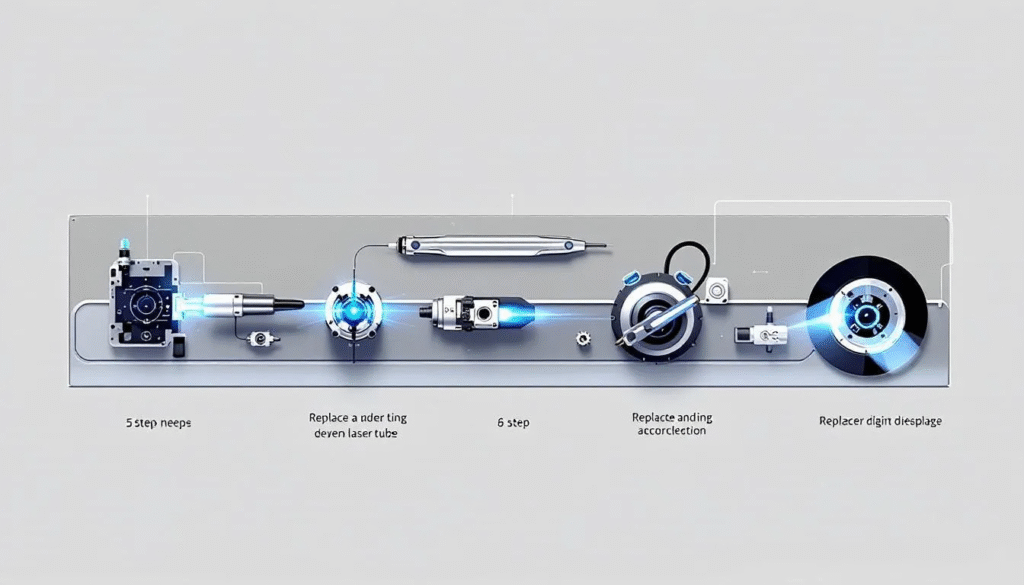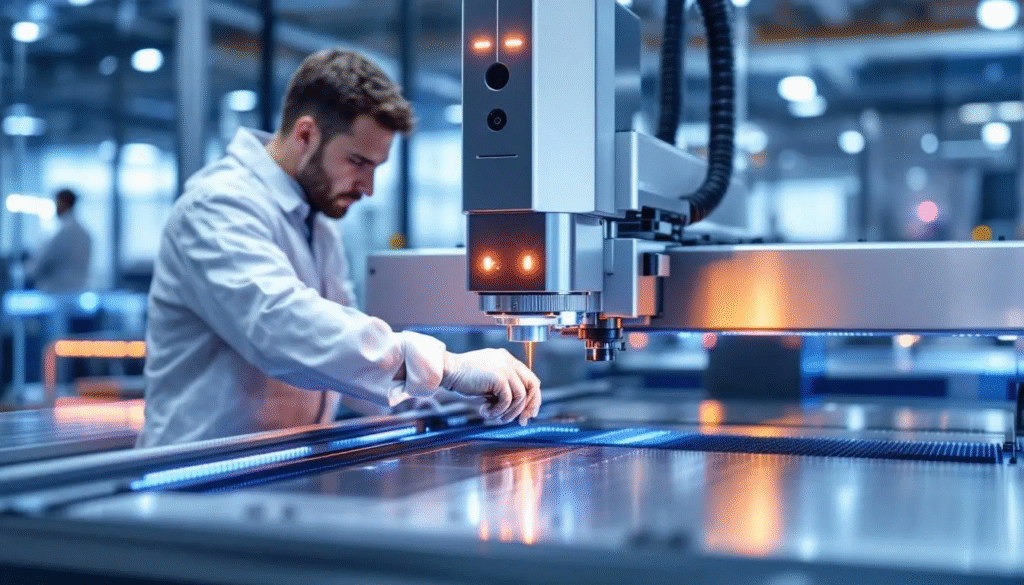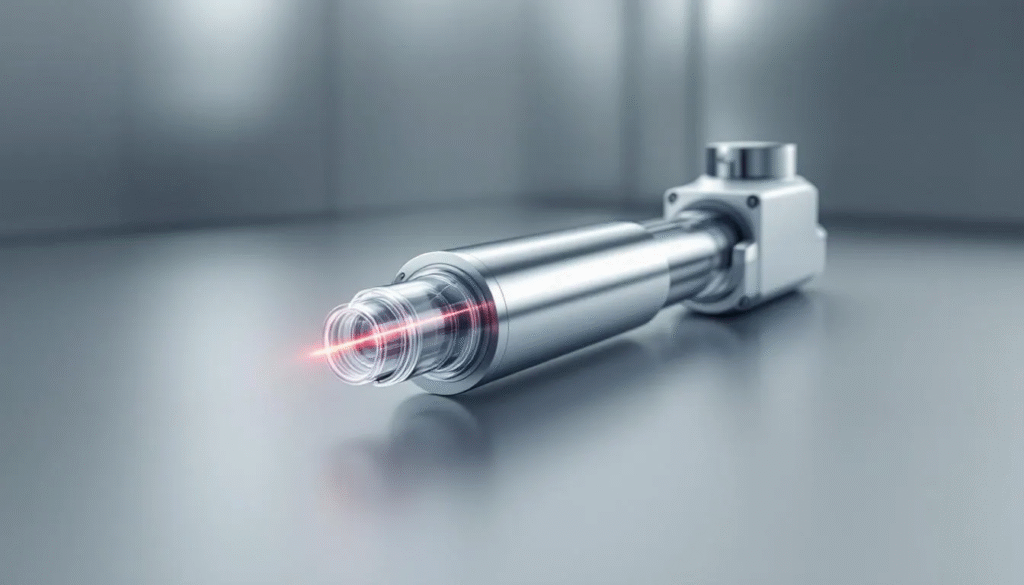Experiencing reduced cutting efficiency or weak laser output? It might be time for a replacement laser tube. Laser tubes are essential components used for cutting and engraving various materials. This guide covers how to identify when your laser tube needs replacing and provides a step-by-step installation process to get your machine back to optimal performance.
Principales conclusiones
- Recognizing signs of CO2 laser tube failure, such as decreased cutting efficiency and physical damage, is essential for timely replacement.
- Selecting a compatible replacement tube involves checking manufacturer specifications and ensuring proper dimensions for installation.
- Proper alignment and maintenance of the new laser tube are critical for optimal performance and longevity, including regular leak checks and cooling system management.
Signs Your Laser Tube Needs Replacing
Maintaining the quality of your work requires recognizing when your laser tube needs replacing. One of the first signs is difficulties in cutting materials that were once easily manageable. A significant drop in the laser’s cutting efficiency signals that the tube is nearing the end of its lifespan.
A weak or inconsistent laser beam during operation can affect the precision of your cuts and engravings. Frequent misfires or a laser failing to ignite altogether strongly indicate a malfunctioning CO2 laser tube. CO2 laser tubes typically have a lifespan of around 1000 to 2000 hours, so regular monitoring is essential.
Degradation in engraving quality is another red flag. If your engravings lack the depth and clarity they once had, your tube might be the culprit. Additionally, visible physical damage such as cracks or discoloration on the laser tube is a clear sign that it needs replacement.
Choosing the Right Replacement Laser Tube

For seamless machine operation, select the right replacement laser tube. Start by checking the manufacturer’s recommendations for tube compatibility with your specific model. Measure the available space in your laser machine to ensure the new tube’s length and diameter fit properly.
Choose a new laser tube with stud-like post at both ends to assist with soldering the connections. Consider the following when selecting your laser tube:
- Look for stud-like posts at both ends for easier soldering.
- Explore companies like Cloudray, which offer a variety of CO2 laser tubes.
- Select from different wattages and specifications to find the perfect match for your needs.
Many suppliers provide bundled deals that include both laser tubes and compatible power supplies, offering potential cost savings.
Preparing for Laser Tube Replacement
Gather all essential tools before starting the replacement. These tools include:
- Craft knife
- Soldering iron
- Screwdrivers
- Wire strippers
- Wire cutters
You may need to cut insulation, tubing, or coverings to access the old tube and prepare for installation.
These tools will facilitate the process and ensure you have everything needed in a way that is at your fingertips.
Remove any insulation tape or silicon sealant to access the solder points smoothly when detaching the old tube. Old CO2 laser tubes are soldered at each end to the power supply. Preparing the new tube is equally important. Wrap flexible wire around the posts to assist with the soldering process for a secure connection.
Before installing the new tube, connect the water-supply pipes, which may be easier if warmed up slightly. Secure all water supply connections before testing the alignment to prevent leaks during operation.
Step-by-Step Laser Tube Replacement Process

Start by cutting silicon tubing to cover exposed solder connections for added safety. Unsolder the connections at both ends of the old tube after removing any covering materials such as insulation or sealant. Water supply pipes need to be detached from the old laser tube during replacement. Once the solder is heated, the end of the tube may pop off as you gently pull it free.
Secure the new tube into its clips within the laser chassis. Use extra wire for better adhesion when soldering the supply leads to the tube’s posts. Warm the silicon water-supply pipes in warm water to make installation onto the new tube easier. Silicon tubing is recommended to cover soldered connections for safety after installation. The old tube has now been replaced with the new one, ready for alignment and testing.
These steps ensure the new tube is installed securely and ready for alignment.
Aligning Your New Laser Tube

After installing the new laser tube, align it for optimal performance by realigning the mirrors to ensure the beam is accurately directed. Use thumbscrews to adjust the mirrors, effectively changing the angle of the beam for better alignment. Proper alignment of mirrors is crucial to avoid premature laser tube fading or failure.
Begin with far-field alignment to ensure the beam hits the correct spots at both distances. Check vertical beam alignment by pulsing the laser on a target and adjusting until the beam hits correctly at various focal heights.
Perform a low-power test to confirm the alignment before conducting high-powered operations.
Testing Your New Laser Tube
Test the new tube by running the water pump and checking for leaks before proceeding to alignment. Perform a pulse test by briefly activating the laser while ensuring necessary conditions like water cooling are met. Regularly inspect for leaks in the cooling system, as even small leaks can significantly affect tube performance. It is important to wear safety gear when working with lasers to avoid accidents.
Maintain a proper cooling system to prevent overheating, a leading cause of early laser tube failure. Use distilled or deionized water in the cooling system to prevent mineral buildup that can impair cooling efficiency.
Store the laser machine in a cool, dry place to avoid humidity-related damage to the tube.
Maintenance Tips for Long-Lasting Laser Tubes

Maintain your laser tubes to extend their lifespan and ensure optimal performance. Improved cooling systems are necessary for higher power tubes to manage the heat they produce during operation. Adequate cooling is critical to avoid damaging the laser tube.
Follow these maintenance tips to keep your laser tubes in excellent condition, providing consistent and reliable performance for a long time.
Where to Buy Quality Laser Tubes
Choosing reputable suppliers is crucial when purchasing quality laser tubes. Replacement laser tubes are sold by a variety of suppliers, both online and through specialized retailers. Established suppliers like Cloudray offer reliable customer support and product warranties, ensuring you get the best value for your money. Customer reviews and testimonials can help gauge the reliability of a supplier. X-Series Laser Tubes start from $405.45, providing a range of options for different budgets.
Compare prices across multiple suppliers to ensure you get the best deal. Research thoroughly to find high-quality laser tubes that meet your needs and budget.
Resumen
Replacing your Tubo láser de CO2 doesn’t have to be a daunting task. By recognizing the signs of a failing tube, selecting the right replacement, and following a detailed installation and testing process, you can ensure your laser machine operates at its best. Proper maintenance and choosing reputable suppliers will further enhance the longevity and performance of your laser tubes.
Preguntas frecuentes
What are the signs that my laser tube needs replacing?
If you’re experiencing difficulties in cutting and a weak or inconsistent laser beam, these are clear signs that your laser tube may need replacement. Additionally, look out for reduced engraving quality and frequent misfires as further indicators.
How do I choose the right replacement laser tube?
To choose the right replacement laser tube, ensure compatibility with your laser cutter by checking the manufacturer’s recommendations, and measure the available space to confirm a proper fit. Opt for tubes with stud-like posts for easier soldering during installation.
What tools do I need for replacing a laser tube?
To replace a laser tube, you’ll need a craft knife, soldering iron, screwdrivers, wire strippers, and wire cutters. Having these tools on hand will ensure a smoother replacement process.
How do I align my new laser tube after installation?
To align your new laser tube, focus on adjusting the mirrors using thumbscrews, and ensure proper far-field and vertical beam alignment. Conduct a low-power test to verify the alignment before proceeding with high-powered operations.
Where can I buy quality laser tubes?
You can buy quality laser tubes from reputable suppliers such as Cloudray, which provides reliable customer support and product warranties. It’s advisable to check customer reviews and compare prices across several suppliers to ensure the best deal.




